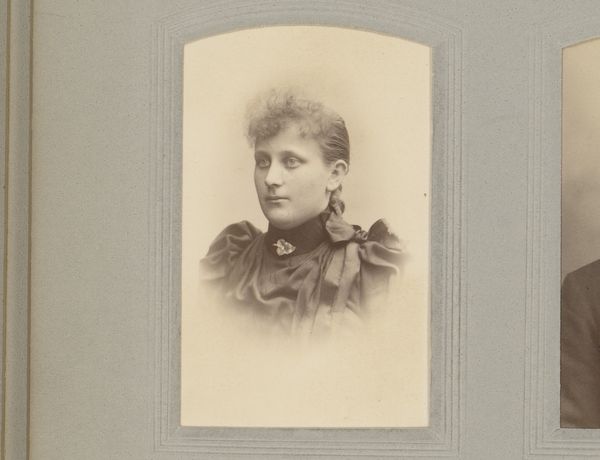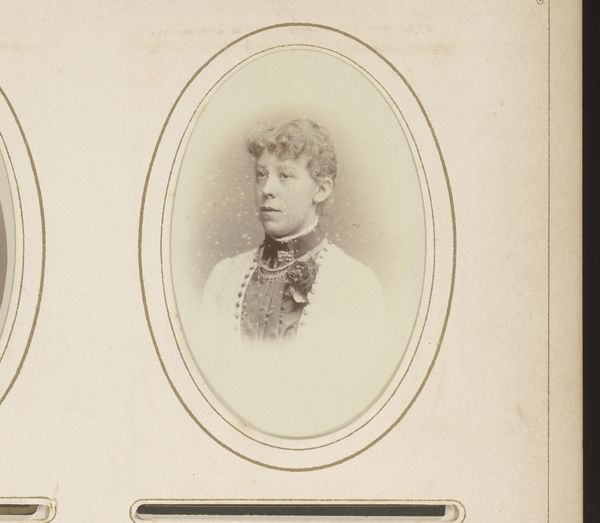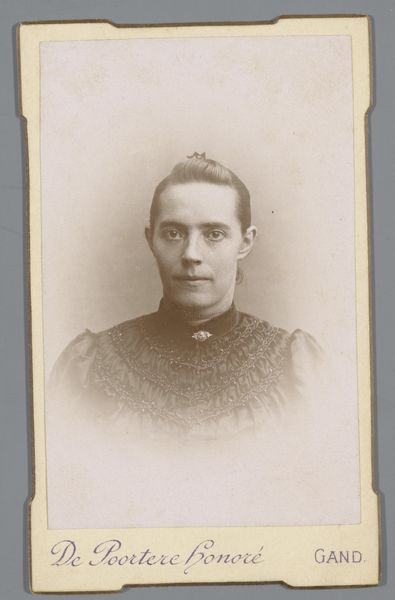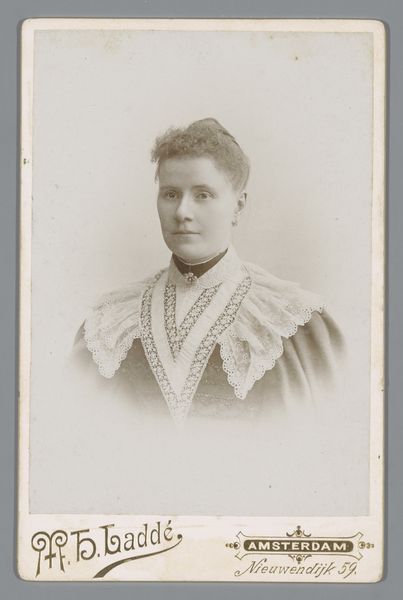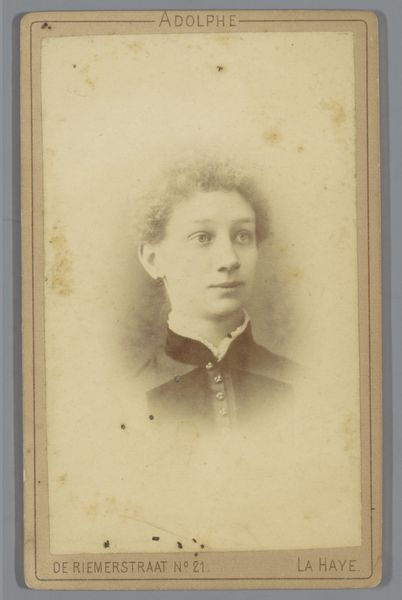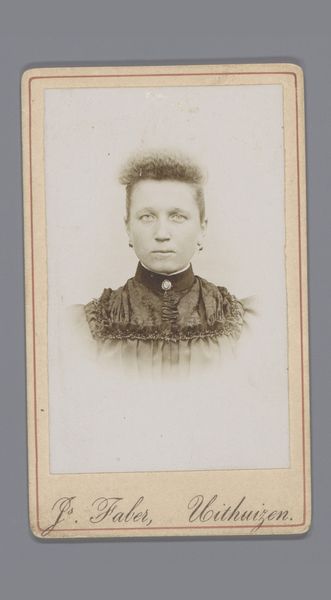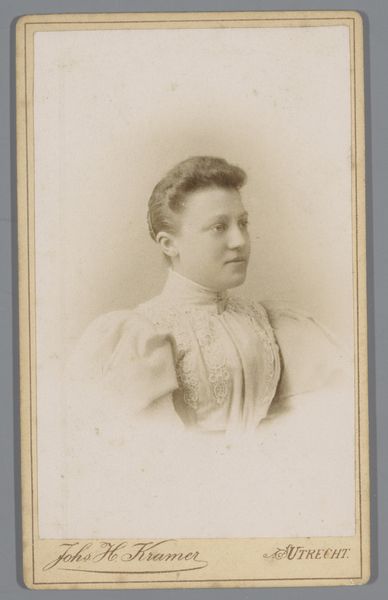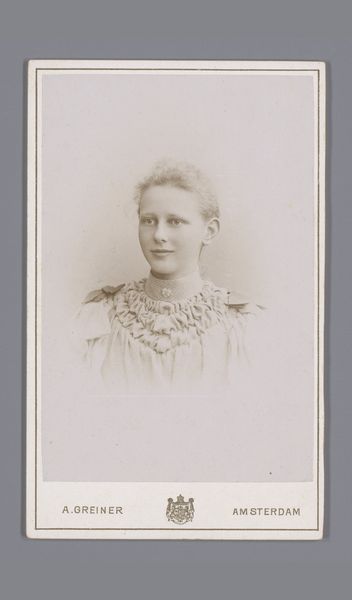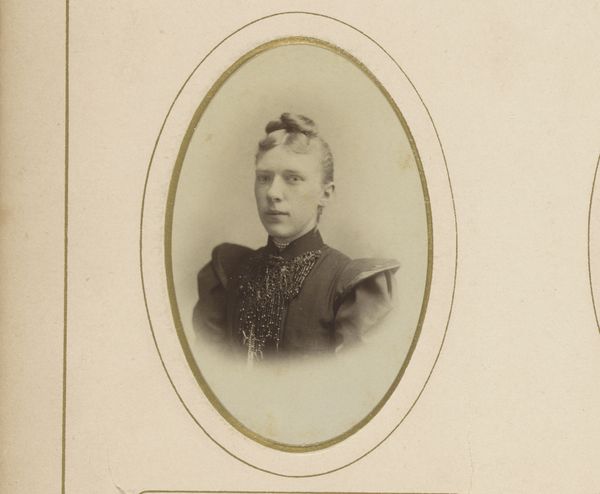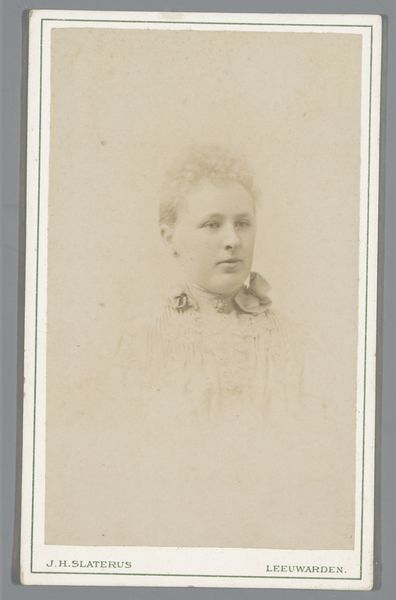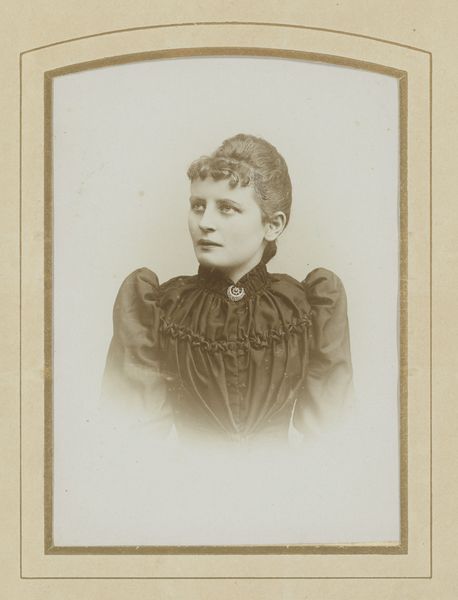
photography, photomontage, gelatin-silver-print, albumen-print
#
portrait
#
traditional media
#
photography
#
historical fashion
#
photomontage
#
gelatin-silver-print
#
albumen-print
Dimensions: height 104 mm, width 65 mm
Copyright: Rijks Museum: Open Domain
Curator: Look at this photographic print; it is entitled "Portret van een onbekende vrouw". It's thought to have been produced between 1890 and 1902 by Georges Raynaud using a combination of gelatin-silver and albumen print techniques. Editor: Ah, the old sepia tint gives it such a sweetly sorrowful air, doesn't it? There's something almost Victorian-novel melancholy about her gaze, despite its formal pose. And the pearls! They cascade like frozen tears. Curator: Well, studio portraiture of this period served very specific social functions. These portraits were commodities—circulated among family, used for social promotion, or even exchanged as calling cards among the upper classes. They had to conform to expectations of respectability. Editor: You can almost hear the rustle of her elaborate gown! I am mesmerized by the depth in the layers of that elaborate beaded design that circles around her dress, so much handwork; It feels weighty. What an interesting contrast with the sort of lightness expressed in the softness of her hair! I'd love to paint that texture; her dress provides drama, and her head offers gentle grace. Curator: Indeed. Think of the sitter, consciously choosing an outfit appropriate for photographic immortality. This speaks to the democratizing impulse of photography; it becomes a technology available to the wider public, in contrast to painted portraits for the elite. Editor: True, she wants to project some degree of wealth and elegance but nothing ostentatious... I think. I get the sense of a solid, well-intentioned character there, gazing calmly at the camera lens. A face filled with light and love, despite the stern and cold presentation required of the era, as you mentioned before. Curator: Right. Though Raynaud’s studio was located in Anvers, he may not have always been shooting just for locals; international visitors might have sought such portraits as souvenirs. Editor: Thinking about what we just said, that sense of stillness becomes even more intriguing. I leave with a lingering feeling of peace and curiosity, wondering who she was and all she went through! Curator: And, perhaps most importantly, we're reminded how images mediate our encounters with the past. Even the anonymous ones still manage to whisper stories if we only lend them an ear, right?
Comments
No comments
Be the first to comment and join the conversation on the ultimate creative platform.
